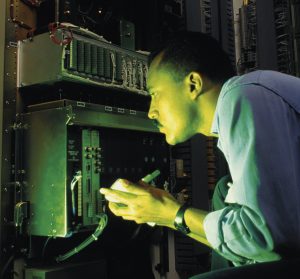
R-22 is an important refrigerant used in HVAC systems. Learn what the phase out could mean for your HVAC systems.
Due to R-22’s ozone depletion and high global warming potential, the compound commonly used as a refrigerant will be phased out as of January 1st, 2020. Commonly used in the heating, ventilation, and air conditioning industries by equipment manufacturers, and refrigerant suppliers the compound’s absence will have notable effects on business functionality. Contractors, specifically, could find themselves in trouble if they don’t prepare for the phase out. In this week’s blog, we’ll take a look at the R-22 phase out and what it means for HVAC contractors.
The Current State of R-22: 2016
So how much of this essential refrigerant do we have left? Every month U.S. industries receive allocations from suppliers detailing limitations on R-22 purchasing. Currently, many HVAC industries are buying the maximum amount allowed. This keeps them in good shape. Suppliers seem to be in good shape as well, as the limitations aren’t having drastic effects on most industries. However, some suppliers are adding further R-22 limitations for contractors specifically. The supply of R-22 will be different, depending on geography, so contractors in specific areas may be affected by the phase out in 2016 than others. Luckily, outsourcing for your R-22 needs from different suppliers will keep you in good shape. For 2016, the compound is out there in abundance and we’re not quite seeing the effects of the shortage just yet. Be sure to do your research on which suppliers enact larger limitations for contractors compared to other.
Reclaiming R-22
Refrigerant recovery is another tactic the U.S. is imploring in order to avoid the drastic effects of the shortage. These reclaim companies claim that the amount of R-22 recovered is declining annually. Reclaiming refrigerants, however, is a process. It involves reprocessing recovered refrigerants in order to restore them to less environmentally harmful levels. Service contractors don’t have the ability to do this, so they rely heavily on reclamation facilities. Cost varies depending on the condition of the refrigerant. Because reclamation requires chemical analysis, it cannot be reclaimed on site. Therefore, HVAC contractors will need to depend on these recycling companies for reclaimed R-22.
Ozone Safe Alternatives
Ozone safe alternatives to R-22 will play a greater role in the transition away from the harmful compound. They are proven to be safer, more reliable, and less expensive than the refrigerants they will replace. Despite having notable benefits, ozone safe alternatives have some drawbacks as well. For example, R-410A (an ozone safe compound) works better in an heat pump than R-22, but it’s a better ozone safe alternative than R-32 (another OSA) which has a flammability issue.
R-22 Replacements and Pricing
Some replacements sell for about 30% than R-22 itself. This is a serious price drop! R-422B, R-438A, and R-422D, specific ozone safe alternatives, are 40-50-% less than the harmful compound they replace. These replacements don’t, however, have the same application-wide functionality that R-22 has. For example, most HVAC units take about 3-5 pounds of refrigerant. If you spend the money on a refrigerant you know works no matter what sort of application you are putting it in compared to compounds that are cheaper but might not work properly in the unit you’re installing it it, wouldn’t it be best to install a compound you know is 100% reliable? As a HVAC contractor, it’s up to you to decide on the amount of money you’d like to spend. For 2016, those in the industry suggest buying R-22 at maximum limitation until it phases out.
Get in Touch With Crockett Facilities to replace Your HVAC units requiring R-22
Older R-22 HVAC units will need to be replaced soon. The question becomes – will property owners pay to replace the equipment now, or wait. If they wait, the budget for future operating expenses must factor in increased repair and maintenance expense as each service request becomes more and more costly in conjunction with the cost of R-22. Those property owners that wait will pay more in the long term than those that replace the aged equipment today.
Crockett Facilities Services, Inc. (CFSI) is committed to helping building owners, property managers, engineers and facility professionals lower their operating expenses through HVAC preventive maintenance. We can develop a cost-effective, customized preventive maintenance plan for your commercial building that will provide you with peace of mind, improved comfort, and energy savings.
To learn more about the R-22 Phaseout, please contact CFSI at 202.600.2787 or sales@crockett-facilities.com. As a commercial HVAC and mechanical contractor, CFSI’s MSCA STAR and GreenSTAR certified technicians help building owners, property managers, and facility engineers to lower their operating expenses and energy costs through preventive HVAC maintenance in Maryland, Virginia and Washington, DC.
